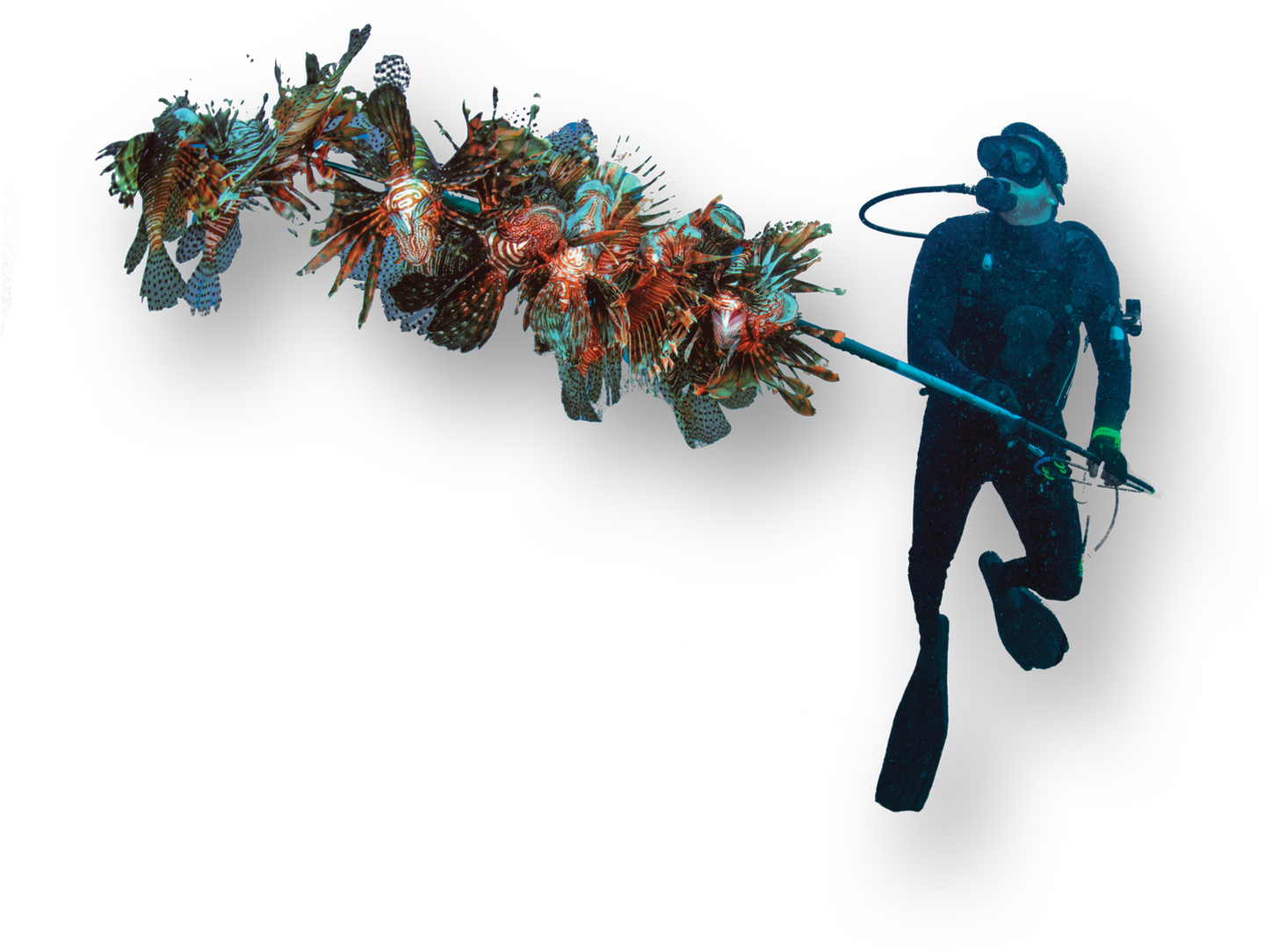Searchingfor Solutions
Scientists,divers,andevenchefsareworkingonwaystoaddressthelionfishproblem.Lionfishdon’thaveanynaturalpredatorsintheAtlanticOcean.So,somescientiststriedtosolvetheproblembyteachinglocalpredatorstolookatlionfishas lunch.
Here'showitworked:Adiverwouldspearalionfish.Thenofferthefishasamealtoanearbybarracudaorshark.Whilethepredatorswouldgladlyeatthelionfishtheywereoffered,mostofthemdidn’tstarthuntinglionfishontheirown.Theyexpectedhandouts.Somespeciesbegantogetaggressivewith divers.

Adiverspearsseverallionfishduringalionfish "derby."
FishingTournaments
Divershavehadmoreluckmanagingtheproblemusingthelionfish"derby.”Thisisasingle‑dayeventtocollectandremoveasmanylionfishatagivenlocationaspossible.TeamsSCUBAdive,freedive,orsnorkel.Theycollectlionfishbynettingthemorspearingthem.Prizesaregivenouttoteamsthatcatchthe most.
Thepublicisinvitedtoattendthecompetition.Theycantastefreelionfishsamplesandlearnmoreabout lionfish.
From2009to2018,theReefEnvironmentEducationFoundation(REEF)hostedderbies.Theyremovedmorethan23,000lionfishfromspecific sites.

Chefspreparenewlionfish recipes.
AFishyFare
Lionfisharenotpoisonous.Theyarevenomous.Thedifferencebetweenpoisonandvenomisthemethodofdelivery.Poisonmustbeeatenorabsorbedtobeharmful.Venommustbeinjectedintothebloodstreamthroughasharpspineorfang,for example.
So,lionfisharesafetoeat.Somechefshaveadoptedastrategy.“Ifwecan’tbeatthem,eatthem.”In2010,REEFreleasedacookbooktogetcommercialdiversinterestedincatchinglionfish.Thebookincludesmanyrecipes.Chefsattoprestaurantshavetriedtofindcreativewaystopreparethisnew cuisine.
SettingaTrap
SteveGittings,chiefscientistattheNationalOceanicandAtmosphericAdministration'sNationalMarineSanctuarySystem,hasanotherstrategy.Hisideausesalionfish'sownbehaviortotrap it.
Lionfishliketogatheringroupsaroundunderwaterstructures.SoGittingsdevelopedatrap.Whenthetraphitsanoceansurface,itspringsopenandlaysflat.Inside,afewplasticobjectsfloatup.Theseobjectsattractlionfish.Whenafishermantugsonthetrap,itcloses,shuttinginany lionfish.
Atthispointthereisnowaytocompletelyeliminatethelionfishpopulation.Butwemustcontinuetomanagethethreat.Thehealthofourcoralreefsdependson it.


